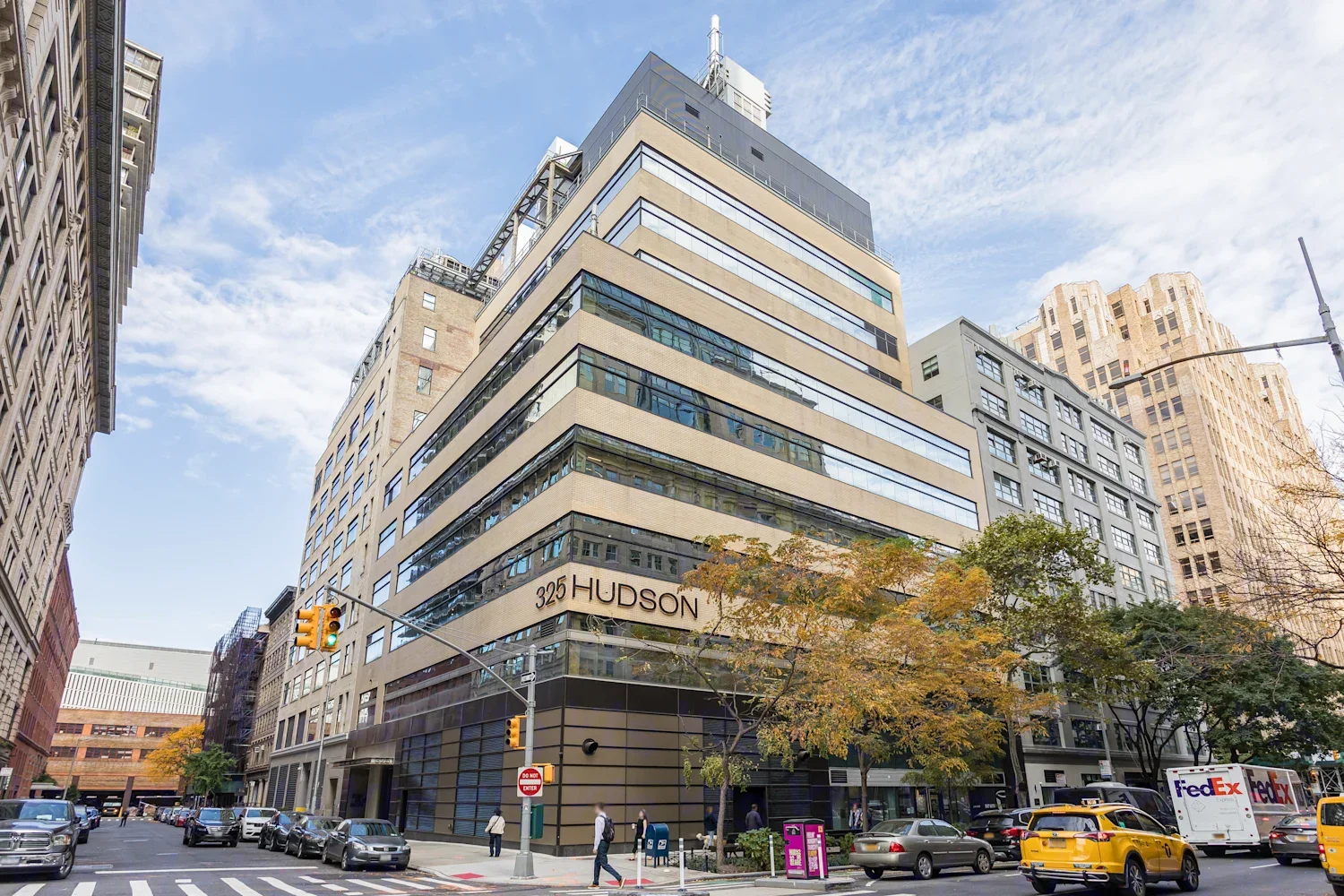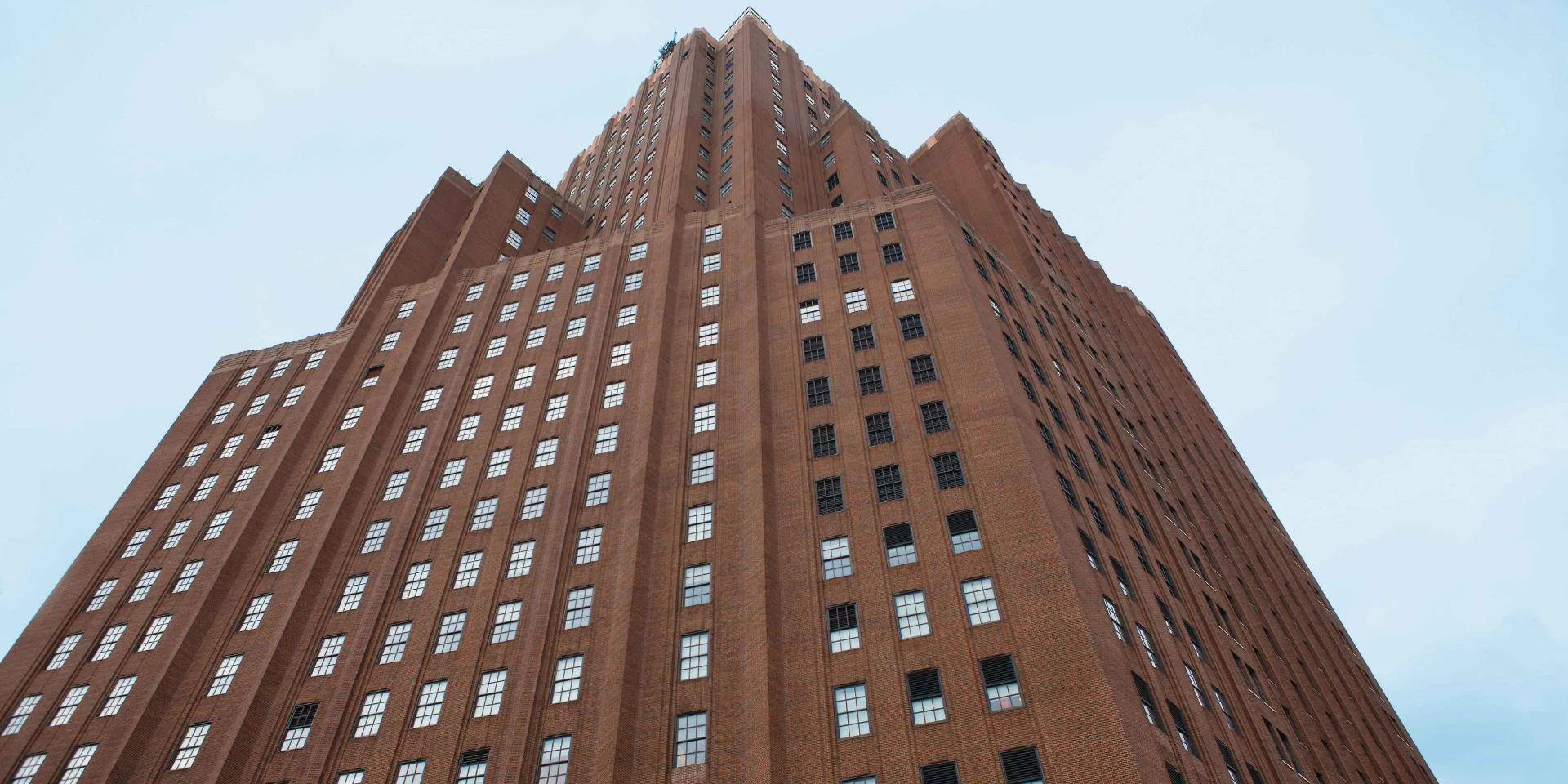Reframing an Asset: Vacant Office Space for High-Density Compute
Last August, a Dallas-based developer successfully bought 135 West 50th Street, a huge commercial office tower in Manhattan, for less than nine dollars per square foot. The closing price was $8.5 million, a 97% discount off of the $332 million that UBS paid in 2006 for the 23-story glass building eight blocks from Central Park. It was a stunning turn of events that, while exceptional, illustrates the fundamental shifts occurring in the commercial property landscape.
Since 2020, major metropolitan areas across the United States have grappled with unprecedented commercial vacancy rates. As remote and hybrid work models solidify their place in corporate America, many forecasts suggest these elevated vacancy rates could persist well into the coming decade. Top-tier cities are experiencing vacancy rates between 20-30%, with some submarkets facing even more challenging conditions.
135 West 50th Street in Manhattan (image: James Hooker).
Property owners and developers have for years now been confronted with a pressing question: What can be done with millions of square feet of premium but persistently underutilized space?
They have answered by developing a toolbox of incremental solutions: converting unused commercial space to apartments or hotels, upgrading space for use by healthcare and life sciences companies, and experimenting with new leasing models. While these strategies have moved the needle, they haven’t closed the gap. Vacant space persists, along with the lost revenue it represents.
Recently, I have been spending a lot of time with real estate developers and property managers, exploring strategies to leverage modular data centers as another tool in their toolbox. While the idea of building data centers within existing buildings in cities isn’t new, the rise of AI and high-performance computing brings with it a new customer base and a fresh business model worthy of investigation.
The Evolution of Urban Data Centers
Data centers have historically been relegated to suburban industrial parks and rural areas where land costs are lower. However, the growing demand for edge computing and ultra-low latency applications has renewed interest in urban data center deployments. Several former telecommunications buildings in major cities have already been successfully converted to data centers, but the trend hasn't yet reached mainstream commercial office buildings. Data center conversions are much less common than other kinds, owing largely to the energy and cooling requirements and the corresponding infrastructure upgrades that accompany the conventional approach.
In speaking with developers, I've picked up on a possible nuance, one that could directly impact decisions on the viability of a data center conversion. It rests on how the fundamental problem is framed: is it a vacant space issue or a lost revenue issue?
If one seeks to directly address a vacant space issue by giving every unused square foot a new life as a useful asset, a data center conversion can be immensely challenging, especially in the era of high-density computing where a small amount of space can solve a large amount of IT need. Each square foot of space repurposed for modern compute can require 300 times the energy and cooling it did serving a commercial office tenant. As a result, to replace a lot of vacant office space with data center space, one often needs to significantly upgrade building systems, adding transformers, switchgear, generators, chillers, cooling towers and more. And these upgrades are impactful on the city around it, bringing heightened resource consumption and noise from rooftop equipment, triggering the possible need for zoning variances, permitting and regulatory approval.
The logistical challenges are enough to keep conventional data center conversion relegated to a minor role in solving the commercial vacancy crisis. But as I mentioned above, AI and high-performance computing have introduced new use cases and data center form factors that enable us to think a bit differently. To understand, let’s reframe our problem another way.
Instead of worrying about vacant space, let’s focus on lost revenue. In the colocation data center space a single kilowatt of compute capacity can command a lease rate that is upwards of $150 per month. A single rack configured with a form factor to fit inside an existing office building can provide up to (and perhaps more than) 60 kilowatts. As a result, on a per-square-foot basis, a data center can drive upwards of $400 in monthly revenue, a one-hundred-fold increase in the revenue potential of each square foot formerly serving commercial office tenants.
Put another way, a single square foot of commercial space converted to high-performance compute can match the revenue lost from about 100 vacant square feet. Using high density computing, developers can compensate for lost revenue, and perhaps even enhance the revenue potential of a building. They just use a smaller amount of space to do more of the work.
The Power Equation: Finding the Right Balance
The numbers above reveal a glaring problem that requires further investigation: a single square foot of high performance compute can replace about 100 square feet in revenue, but consumes the equivalent of 300 square feet in power and cooling. On its surface, this seems like a non-starter, lest we delve into the world of infrastructure enhancements that have been a drag on data center conversion efforts historically.
However, Class A office space is often designed for much higher energy usage than tenants actually need. When designing a new office building (or a retrofit), engineers need to be conservative because it is so hard to upgrade building systems after the fact. The sizing of power and cooling systems often assume a worst-case power draw across all spaces on all floors, when in reality the actual tenants who occupy the space consume a lot less. The gap between capacity and demand can be seen in hindsight, by comparing actual utility bills or data from the building management system (BMS) against what the building is designed for. Those numbers can sometimes reveal an overdesign on the order or 30-50%.
Last year, DivcoWest completed a redevelopment of 325 Hudson Street that not only expanded the power and cooling capacity of the building but also included readily-available roof space to expand this infrastructure if required for new programmatic uses (image: DivcoWest).
When such excess power capacity exists, developers can get very close to a free lunch. Building owners can supply the power needed for high-density compute without inadvertently de-energizing and stranding office space elsewhere in the building. The upper limit to the free-lunch scenario comes when all of the excess power capacity (as described above) has been diverted to a suitably-sized compute cluster.
Given the size of many modern commercial office buildings and the potential proportion of spare power and cooling capacity, the resulting compute cluster is modest from a per-square-foot perspective when compared to conventional data center conversions. A modern office building with a million leasable square feet might have a design power load of 12,000 kilowatts. If actual usage is 25% less than design, that would imply an available capacity of 3,000 kilowatts for the data center and require about 1,500 square feet. This is enough to power the largest size of a standard NVIDIA AI cluster using the most advanced GPUs on the market today. In other words, a lot of firepower.
This kind of strategic reuse can’t be completely equated to a conventional data center conversion, such as the one at 32 Avenue of the Americas in Manhattan, where Rudin and Digital Realty repurposed 72,000 square feet of commercial space into a 10,000 kilowatt low-density data center. Our use case uses less power and far less floor area. In contrast with conventional conversions, our goal is to justify revenue potential with minimal up-front capital expenditure by avoiding expensive and time-consuming building upgrades. We size our data center for the building’s intrinsic overall capacity and limit conversion costs to small, localized power and cooling system upgrades and the installation of a data center module that spreads out the weight of the racks and provides localized power, cooling and telecom distribution around the server racks themselves. This makes the data center installation very fast compared to conventional conversions and enables the building owner to deploy data center capacity incrementally over time in response to evolving demand for both compute space and the commercial office space that remains.
Conventional data center buildouts, like the one at 32 Avenue of the Americas, are driven by available space and are consequently large and require significant up-front infrastructure upgrades before any IT capacity is brought online (image: CoreSite).
Building owners must also remember that, even if they divert so much of the building’s limited resources to high-density compute that it begins pulling them away from the conventional office space, that’s only an issue if the office space is expected to pull in revenue. In other words, owners should forecast out what vacancy rates they expect in their building for the next 5-7 years and consider repurposing the stranded energy to power colocation data center space. After all, the vacancy rate for colocation space nation-wide is at an all-time low, below 3 percent and declining.
Reframing Assets
Artificial intelligence is catalyzing change across every market in the modern business landscape. It is causing an expansion in the customer base for data center space, while at the same time redefining what data centers themselves look like. The energy consumption of these new technologies has already disrupted global energy markets, so much so that long-decommissioned nuclear plants are being brought back online to power a new fleet of AI factories.
It is not enough though to generate the energy. Every high-density compute cluster needs localized infrastructure to support power distribution and cooling. Critical equipment for new data centers is in short supply given market demand, and most developers are on 12- or 18- month waitlists to get items necessary to commission their facility. Meanwhile, commercial property owners are fortunate to possess energized, underutilized buildings in major metropolitan areas, precisely where AI systems will be needed over the next 3 to 5 years to meet expanding edge and inference use cases.
I’m writing this article from an office chair in my Brooklyn apartment, a rather nice teleworking spot. The market rate for the square foot I’m occupying right now is about a hundred times what Thakkar Developers paid for 135 West 50th Street. That building, seen through the lens of conventional commercial space, is a distressed asset. But it also probably has upwards of 8 megawatts of power and cooling capacity, and if one squints one might see the makings of a high performance compute facility representing a revenue stream of about a million dollars a month. That facility could easily fit on just one of the 23 floors in the building. What about the other 22 floors? They wouldn’t be burning much of a hole in anyone’s pocket. They could be left vacant for now, awaiting a future business case to expand the building’s infrastructure to enable more IT space, revitalized office space, condos, classrooms, or for a future purpose that hasn’t been envisioned yet.
That’s a radical departure from how the building was intended for use by its architects back when it was built in 1963. But then, as now, the building was fundamentally intended to be an investment. That investment is about more than just floor space - it’s about what the building is holistically, as well as what it could be in the future.


